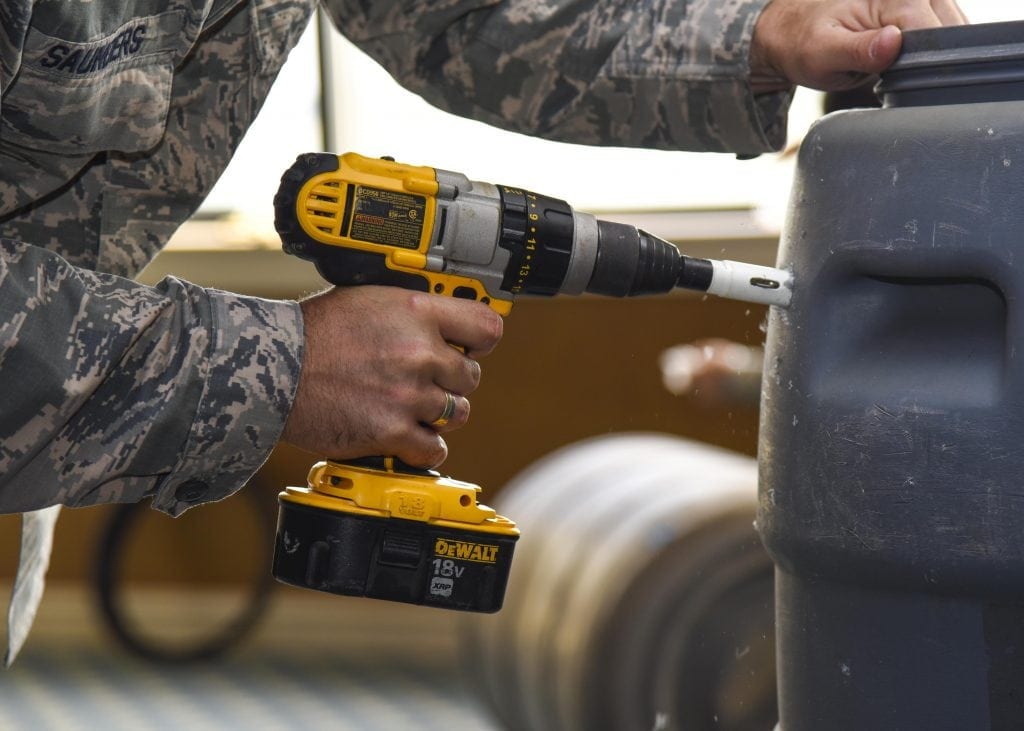How to Use a DeWALT Drill?
There are a lot of great drill and power tool brands out there, but when it comes to quality, DeWALT just can’t be beaten. The company makes a variety of tools, ranging from ¼ inch drives, ½ inch drives, ⅜ inch drives, and specialty drills. Although many models have their own unique variations, the drills tend to work largely the same for the most part and are fairly easy to manage. DeWALT drills are cordless and feature their patented battery system.
Before you can use your drill, you must first charge the batteries up! After that, you’ll be able to put the battery in the drill. To insert the battery, squeeze the sides and then push it up into the bottom of your drill. Once you’ve done this, you can release the sides, and the battery will lock into place.
Next, you’ll need to put your bits into the drill. Grip the chuck and handle of the drill firmly and turn the chuck counterclockwise (to the left). This will help loosen the jaws of the chuck and allow you to remove the bit.
Once you’ve removed it, examine the bit to make sure you don’t need to replace it. If everything seems to be in working order, move onto the next step – putting in your new bit. You’ll want to hold the new bit with your thumb and index finger and make sure that the shank (the smooth end) is facing towards the jaws of the chuck. Insert the shank into the chuck jaws and then immediately pull it back towards yourself approximately one centimeter.
This will prepare it for being set – but you’ll still need to maintain a light grip on the bit! Next, pull lightly on the trigger while helping to keep the bit upright. This will ensure that it’s installed correctly. Once it’s been set into the drill, you’ll be ready to start your work. Test the drill at full speed to make sure the bit is in place, and then you can start your project.
To use the drill, you’ll need to press the ‘Forward/Reverse’ button. This will put it into a forward motion. This should be on the right side of the device. Next, you’ll want to start drilling holes into your material. Start by squeezing the device lightly so you can get a clean start, and then increase the pressure and power as needed. Once you’ve drilled the hole to your desired depth, press the ‘Forward/Reverse’ button to change the drill into the reverse setting. This will allow you to bring the drill bit back up out of the hole you created.

Dewalt Drill Torque Settings
Many people focus on speed to find the ideal power output they need to get their work done. However, this approach is a mistake. The speed doesn’t have any impact on how much torque a device can generate to complete a task. In fact, torque is defined as the force produced to turn an object – how much force is generated isn’t dependent on how much speed is generated.
When using your DeWALT drill, you’ll want to make sure that you’re able to differentiate between being able to access high speeds and access higher torque. This will make a big difference when it comes time to start your projects.
Dewalt Drill Clutch Settings
When using your drill, you’ll also need to learn how to adjust the clutch settings. These settings are important because they will determine how far your drill will bore into the material you’re working with before it stops. You’ll need to ensure you can work the clutch properly to keep a consistent and proper depth. The clutch is located behind the chuck; it’s the moveable part of the drill with a series of numbers around its ring.
These numbers can vary in size depending on what type of drill you’re using. However, the way they work will be the same. The lower the number is, the more pressure the clutch can put on your drill bit while you work. This increased pressure will help ensure that the drill doesn’t bore too far into the material. The higher the number is, the less pressure you’ll have on the drill bit, enabling you to drill farther into your materials to get the proper measurements.
What is the DeWalt XR?
The DeWALT XR is a new line of DeWALT tools. The products have been redesigned and updated to be the fastest, strongest, and toughest brushless tools to be released. These tools are built to last. They’re made from only the finest materials and designed to be extremely durable.
Additionally, these tools also have the strongest and most advanced brushless motors on the market. You’ll be able to work even more effectively with the new improvements and updates added to these tools. They’re some of the best investments you could choose to make and will serve any contractor well.